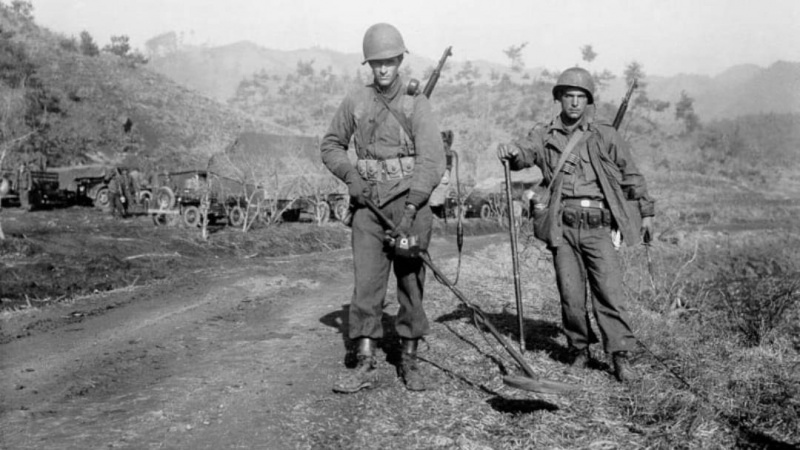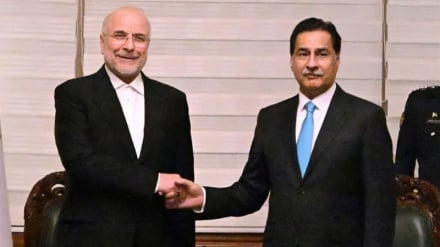U.S. crimes in East Asia: A look at the Korean war, one of the bloodiest East-West confrontations in modern history
-

Rare photo from the first U.S.-North Korea war
Pars Today – The Korean Peninsula, one of the most sensitive and tense flashpoints of East-West confrontation, became the scene of a bloody and chaotic war. It posed a far more serious threat of direct conflict between the U.S. and the Soviet Union than Eastern Europe, Cuba, or even Afghanistan.
Beyond causing millions of deaths, this war reshaped global power dynamics, and its effects are still felt in the region today. In this Pars Today report, we examine the reasons behind the bloody confrontation between the two powers on the Korean Peninsula.
The Korean war: A bloody confrontation between two superpowers
The Korean Peninsula, which had been under Japanese occupation from 1905 to 1945, was divided into northern and southern zones after World War II. The Soviet Union took control of the North, while the United States established influence over the South. This division laid the groundwork for the formation of two states with opposing ideologies: The U.S.-backed Republic of Korea in the South and Kim Il-sung’s communist government in the North, supported by the Soviet Union.
Outbreak of war: North Korea’s surprise attack on the south
On June 25, 1950, Kim Il-sung, with Soviet military support, launched a full-scale attack on South Korea, quickly seizing control of most of the peninsula. Only the Busan area in the South remained under the Republic of Korea’s control. This early success alarmed the United States and the United Nations, prompting an immediate UN resolution against North Korea.
U.S. and UN intervention: Shifting the course of the war
With the deployment of nearly 300,000 U.S. troops and United Nations forces to assist South Korea, the North Korean forces were pushed back. The United States aimed to prevent the spread of communism in East Asia and to stop the Korean Peninsula from falling entirely under Eastern Bloc control. This decision marked the beginning of a long and bloody war.
China enters the battle: The war’s biggest surprise
In November 1950, as U.S. forces approached the Yalu River, more than 900,000 Chinese volunteer troops suddenly entered the battlefield, turning the tide in favor of the North. This massive force, backed by China, forced UN armies to retreat once again, ushering the war into a new and intense phase.
War of attrition and intense battles
After China’s entry, the war became long and costly. Northern and southern forces repeatedly captured and lost territories. The Soviet Union also participated directly by sending 25,000 elite troops to Pyongyang. Seoul, the southern capital, changed hands multiple times, highlighting the intensity and ferocity of the fighting.
End of the war and armistice agreement
After three years of relentless conflict and millions of casualties, the parties began negotiations and finally reached an armistice on July 27, 1953. A new boundary along the 38th parallel was established, separating North and South Korea. This political division remains in place today, making the Korean Peninsula one of the world’s most tense regions.
Casualties and consequences of the Korean war
Estimates indicate that over 3 million people lost their lives in the war, the majority being Korean and Chinese civilians. The United States suffered nearly 36,000 casualties. This conflict was not only one of the most destructive regional wars but also elevated China’s status as a global power and made the U.S. take the strategic importance of East Asia more seriously.
Strategic lessons from the Korean war
The Korean war demonstrated China’s real power to the world and prompted Washington to reconsider its policies toward Beijing. The conflict also showed that the Soviet Union had limited willingness and capability to confront the U.S. directly, though it would support its allies. By maintaining a military presence in South Korea, the United States ensured that the country did not fall to communists, even at the cost of heavy casualties.
The strategic importance of Korea: East-West confrontation persists
Even after the end of the Cold War, the Korean Peninsula remains one of the world’s most sensitive regions. Historically, it posed a greater risk of direct East-West confrontation than Eastern Europe, Germany, Cuba, or Afghanistan—and it continues to do so today. Political and military tensions remain high, and the Korean War serves as a reminder of a bloody, major conflict whose effects are still tangible in the region.


